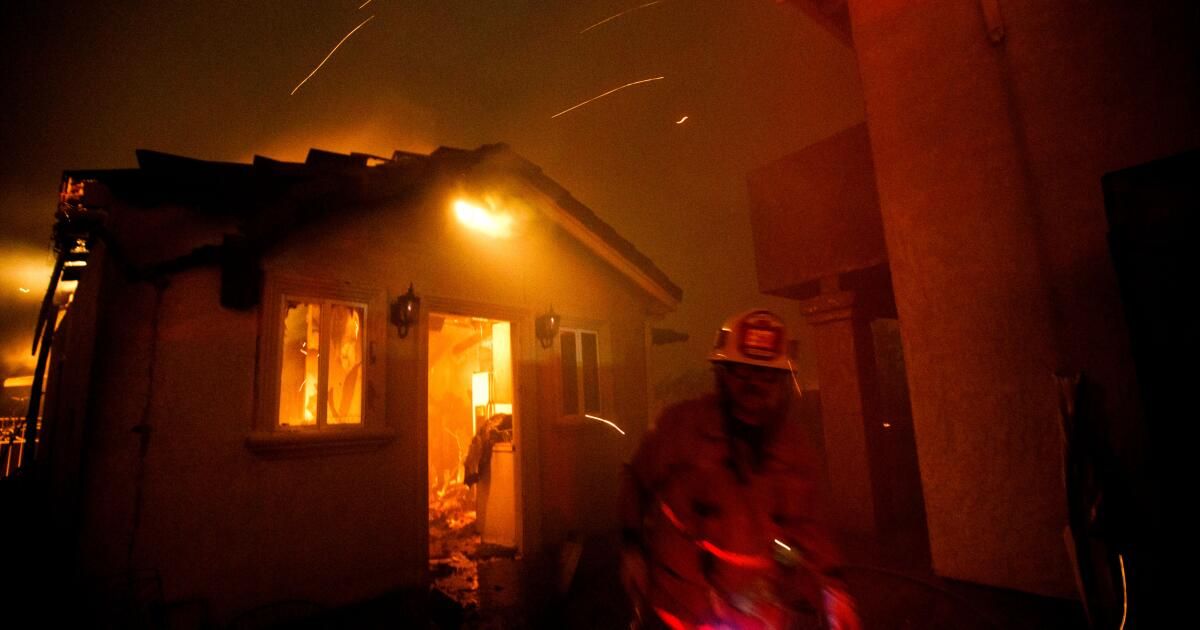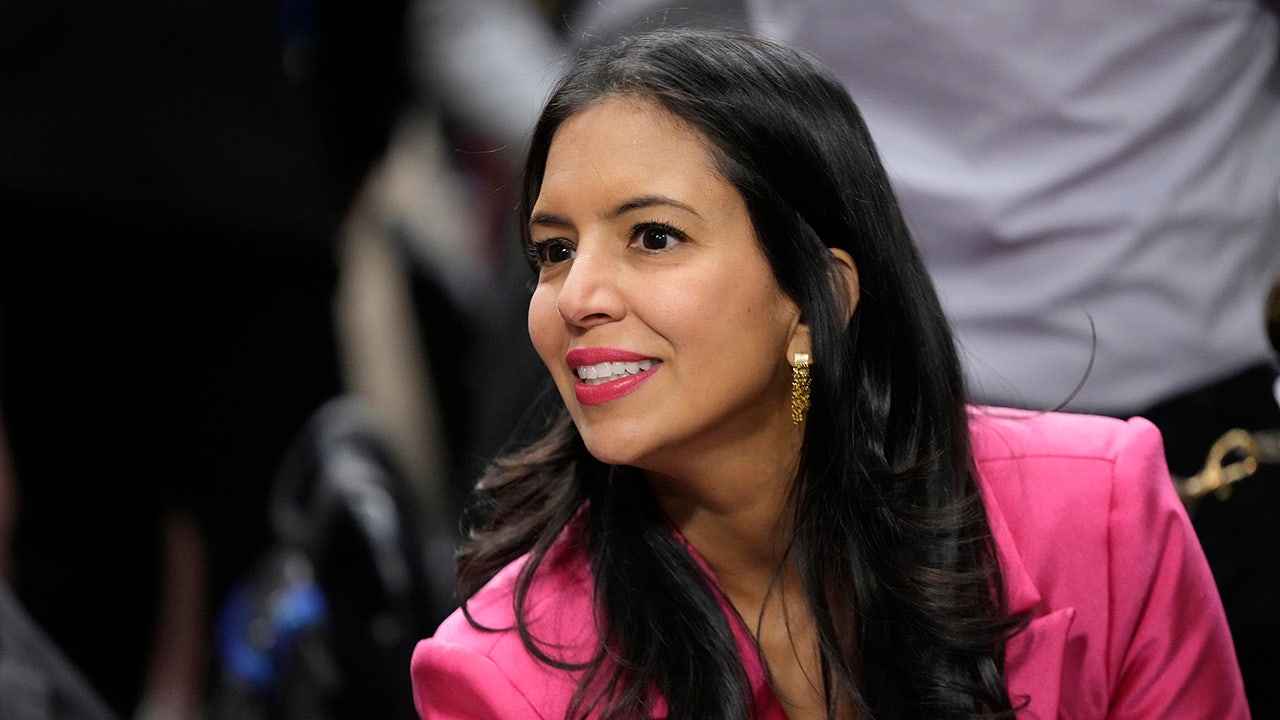As home insurers are reducing coverage in the state, enrollment in California's backup insurance plan is increasing, as is the plan's risk of suffering losses it cannot cover.
Victoria Roach, president of the FAIR Plan Association, told lawmakers this week that homeowners, even in areas with low wildfire risk, were finding it difficult to keep their homes insured as companies raised rates, limited coverage or left areas susceptible to natural disasters in the middle of the climate. change.
That has led thousands of Californians to purchase coverage through the state insurer as a last resort. Funded by insurers operating in California, the Fair Access Insurance Requirements plan provides a limited policy as an alternative for homeowners who cannot find conventional coverage they can afford.
Roach said Plan Justo set a new record last month when it added 15,000 new policyholders.
The FAIR plan has around 375,000 policyholders and the insurer's total risk exposure was $311 billion in December 2023; It was 50 billion dollars in 2018.
“We are one of the largest writers in the state right now in terms of new business coming in,” Roach said. “As those numbers increase, our financial stability becomes more questionable.”
Roach said homeowners and businesses are typically insured by either of the state's 118 standard insurers or 132 surplus line insurers, which specialize in high-risk insurance.
“Unfortunately, as you know with the current state of the market, I think this often backfires because there aren't a lot of options for people,” Roach told lawmakers during Wednesday's Assembly Insurance Committee. “Instead, the FAIR plan is quickly becoming the first resort for many people.”
He said consumers who would never have sought insurance through the FAIR scheme in previous years were now among the new insured, many of whom did not live in bushfire areas.
The insurer's expansion is the latest twist in California's ongoing insurance crisis and reflects a similar trend across the country of large companies losing customers in areas prone to wildfires, floods and hurricanes.
Florida's state insurance of last resort, known as Citizens Property Insurance Corp., has become the largest property insurer there, adding about 11,000 new policies in the past two weeks, according to local reports.
In Louisiana, state officials have been trying to address an insurance crisis after a series of hurricanes in 2020 and 2021 caused insurance companies to stop renewing policies or leave the state.
Since 2022, at least eight insurers, led by State Farm and Allstate, have announced plans to stop offering home insurance to new customers or withdraw from the state entirely. Some blamed an increase in the cost of reinsurance (insurance policies that insurance companies buy to cover their large losses) and financial strains caused by inflation that have made materials and labor more expensive for repair and reconstruction. household.
The potential loss of insurers led Gov. Gavin Newsom to issue an executive order directing the insurance commissioner to take action to address problems with the insurance market and expand coverage options for consumers.
Insurance Commissioner Ricardo Lara's response to the crisis is a set of new rules still being implemented that would allow insurers to raise rates to cover reinsurance costs and projected losses from catastrophic fires, but also allow them would require providing coverage to more homes in the canyons and hills. . The proposals, which aim to get people off the FAIR plan and curb rising premiums, have drawn support from insurance industry trade groups and some consumer groups, but criticism from other consumer advocates.
Under the existing system, insurers must ask the Department of Insurance to raise their average rates across the state and demonstrate that the price increase is justified. The process allows consumer advocates to intervene to challenge the insurer's claims.
This system was created when California voters approved Proposition 103 in 1988, but the insurance department went a couple steps beyond the ballot measure. Its rules prohibited insurance companies from including the cost of reinsurance in their rates and allowed the use only of historical loss data, rather than forward-looking simulations, to support an increase in premiums.
Insurance industry representatives have been trying to lift both restrictions for years, but their calls have intensified as insurers dropped coverage in California.
On Thursday, Lara proposed a regulation that would allow insurers to use catastrophe models that take into account the projected impacts of climate change and other changing factors when requesting a rate increase.
“We can no longer look solely to the past as a guide to the future,” Lara said in a statement. “My strategy will help modernize our marketplace, restoring choice to consumers while safeguarding the independent and transparent review of rate submissions by Department of Insurance experts, which is a fundamental principle of California law.”
The proposed regulation comes a week after the Los Angeles County Board of Supervisors passed a motion demanding that Lara investigate the compliance measures that insurance companies require of homeowners to maintain their coverage.
“It's no secret that insurance providers have become more conservative due to increased wildfire threats across the state,” Supervisor Kathryn Barger, who introduced the motion, said in a statement. “As a result, homeowners increasingly find themselves in a very difficult position: pay higher premiums and comply with varied, costly and inconsistent mitigation requirements or lose their insurance.”
He added: “I have heard from many of my constituents across the district that they are facing steep cost increases or being written off entirely by their insurance companies and left to fend for themselves. “That is simply unacceptable.”
In response to the proposed expansion of disaster models, Consumer Watchdog, a consumer advocacy group that often weighs in on proposed rate increases, said Lara's proposed regulation limits transparency.
“Black box catastrophe models are notoriously inconsistent and unreliable, which is why public review and transparency are key before insurance companies are allowed to use them to raise rates,” the group wrote in a statement. . “Commissioner Lara's proposed rule appears drafted to limit publicly available information about the models' impact on rates in violation of Proposition 103.”
The group maintains that the rule does not explain how the Insurance Department would evaluate a model's bias or accuracy and instead creates “a prior review process that appears focused primarily on determining what information companies must disclose and what they can hide from public view.” .”
“California needs a public catastrophe model to ensure climate data is transparent and prevent bias and insurance price gouging.”
Staff writer Sam Dean contributed to this report.












